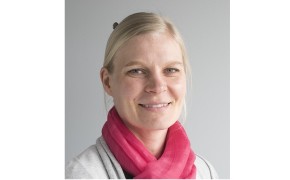Industrial symbiosis in waste management center leading into a high rate of material, energy and nutrients recovery and recycling.
Landfilling brings not only environmental challenges but also economic losses as valuable materials, energy and nutrients are lost.
The Päijät-Häme Waste Management company (PHJ), located in Kujala Waste Treatment Centre, in Lahti, Finland, is the core of the Kujala industrial symbioses. PHJ serves over 200 000 residents and 13 000 companies. Due to a sophisticated at-source sorting system, in 2016, only 3% of the of the total municipal waste was landfilled. Approximately 42% was recovered as material.
PHJ strives to achieve a 50% recycling rate by processing waste into raw materials for industry. The new sorting plant, which processes mixed waste, energy waste and construction waste, separates fibres, plastics and various metals that can be recycled or processed further.
As a part of the industrial symbiosis biowaste and wastewater sludge are treated in a biogas and composting facility. Biogas and digestate are further processed by nearby companies. Metal scrap and gypsum plasterboard waste are separated and forwarded for recycling, earthwork products are manufactured from concrete waste and roofing felt waste is processed to raw material for asphalt production. Energy waste is processed into a solid recovered fuel consisting of wood waste and household waste, for the nearby gasification power plant, to produce district heat and electricity for the region. Kujala industrial symbioses contribute to vast resource recovery and enable new green business to arise.
Resources needed
PHJ is jointly owned by 10 municipalities. Investments, awareness raising and cooperation with stakeholders has been done continuously since 1993. The turnover in 2016 was 15,7 M€ and the number of employees 40.
Evidence of success
The utilization level of municipal waste has increased considerably within the last 10 years. In 2008 the rate of recovery was 54% and in 2017 it was 97%. In 2017 only 3% of the total municipal waste generated in the region was landfilled.
Difficulties encountered
One challenge is to increase the sorting of biowaste at the place of origin, so that the waste ending up at the sorting plant would be as clean as possible. Other challenges are seen in raising awareness and educating citizens and companies in changing their old habits to new ones.
Potential for learning or transfer
Long-term cooperation between municipalities and neighbouring companies has enabled the development of a functional.system. This is the key to a successful industrial symbioses and circular economy in the Päijät-Häme waste management case. In addition, education in prevention of waste and a functional at-source sorting system are fundamental.
Please login to see the expert opinion of this good practice.
Tags: Bio, Renewables, Circular economy








